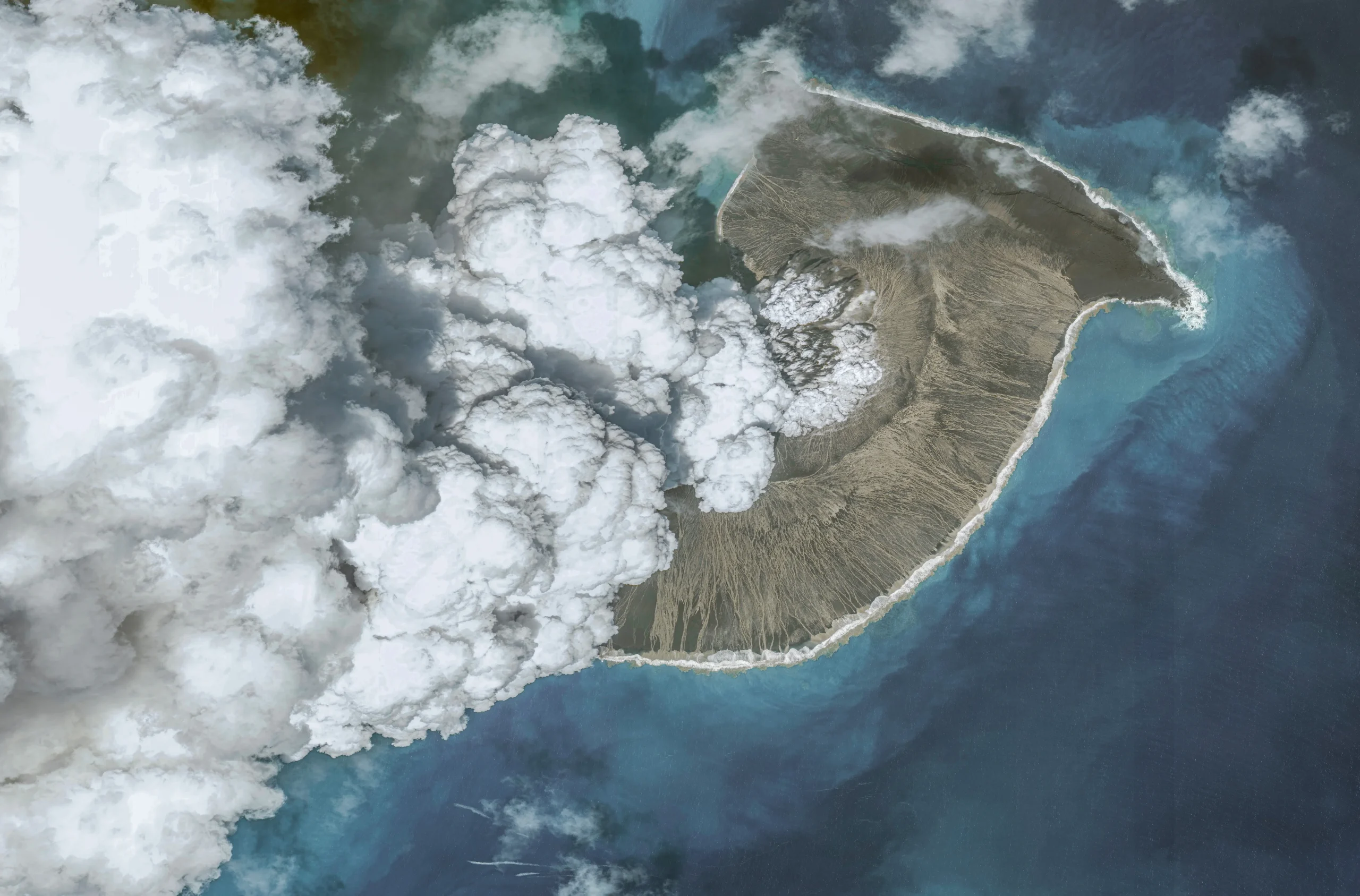By: Alyssa Hong
Tonga, an island nation in the South Pacific, made history in 2022 with an undersea volcano. It released an ash and water plume that reached the edge of space. A wave that was as tall as the Statue of Liberty was also released. Now, scientists discover that it caused lightning to occur at the highest elevations ever observed.
On June 28, researchers presented their findings. In Geophysical Research Letters, the research was published. Lightning flashes that started 20 to 30 kilometers (12 to 19 miles) above sea level were caused by the eruption plume. That’s even higher than most airplanes fly—all the way up in the stratosphere.
Most typically, lightning is created inside storm clouds. However, lightning can also develop inside the eruption plume of a volcano, made up of microscopic ash, gas, and dust particles. Static electricity is created when these microscopic pieces collide. When there is enough static electricity, lightning flashes across the plume.
A group led by Alexa Van Eaton examined the height of the lightning during the Tonga eruption. She works as a volcanologist at the Cascades Volcano Observatory of the U.S. Geological Survey in Vancouver, Washington. Van Eaton’s team examined several different sorts of data to determine the height of the lightning. One was radio waves that the lightning produced. They also looked at infrared light from the flashes and satellite pictures of the eruption plume.
From the data, the team discovered that the lightning originated more than 20 kilometers (12 miles) above sea level. Normally, lightning does not develop so high up. According to Van Eaton, the rising eruption plume may have raised the air pressure over the volcano. It could have been sufficient to produce lightning leaders at eerily high altitudes.
“We’re seeing stuff that we’ve never seen before,” says co-writer Jeff Lapierre about the eruption data. He also serves as chief lightning scientist at Germantown, Maryland’s Advanced Environmental Monitoring. It’s a Germantown, Maryland-based business.
According to Lapierre, this eruption has, “completely changed the way we think of how natural events can change the atmosphere.” It has also altered “the environment where we thought lightning could exist.”











